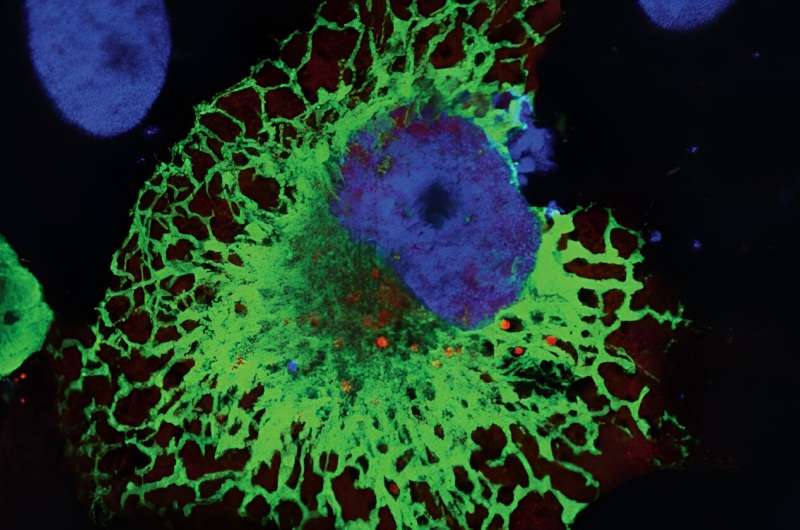This article has been reviewed according to Science X's editorial process and policies. Editors have highlighted the following attributes while ensuring the content's credibility:
fact-checked
trusted source
proofread
How plant biology research could inform COVID-19 treatments

Investigating the building blocks of biology can lead to unexpected outcomes. That's what happened when researchers at the Department of Energy's Oak Ridge National Laboratory were exploring plant genetics. Although their research was focused on improving plants to use as bioenergy crops, what they found could help develop future treatments for COVID-19.
The biologists were investigating a certain protein domain in plants called plasminogen-apple-nematode, or PAN for short. In plants, the genes that control PAN trigger or limit the uncontrolled growth of cells. Certain plants in the wild use this function to "heal" wounds, like a scab. It's useful for geneticists because they can leverage PAN to grow genetically engineered plants. At Oak Ridge National Laboratory, scientists use it to help create new strains of trees like poplar for biofuels.
Previously, scientists had found that these genes also show up in humans. They must have originally appeared billions of years ago in an ancient ancestor of plants and animals. The genes then remained in our genetic code.
But in humans, this process appears to be much less useful than in plants. While uncontrolled cell growth in plants can be healthy, it's often deadly in people. All eight of the key genes are associated with specific forms of cancer. PAN is often overexpressed in tumors. However, medical scientists are investigating ways to leverage this process. Cancer treatments could potentially target PAN to deliver drugs to tumors.
The recent discovery found that not only is PAN generally present in humans, but it's specifically present in the NRP1 receptor protein. Receptor proteins bind with certain molecules. When the molecule binds to a receptor protein, the receptor changes and can send a signal into the cell. It's like opening a door.
The spike protein in the virus that causes COVID-19 takes advantage of this process to invade cells. NRP1 is one of the two receptor proteins that the virus targets. While current COVID-19 treatments target the other receptor (called ACE-2), the NRP1 has a lot of promise.
To find out if they could prevent the virus from taking advantage of this process, the Oak Ridge scientists changed a certain type of amino acid in PAN. This type of amino acid is needed for the spike protein to invade. This change weakened how NRP1 interacted with the virus's spike protein. In turn, it was harder for the virus to invade the cells and multiply. It led to a substantial reduction in how many of the virus's spike proteins were in the human cells. The results held true across a number of different variants of COVID-19, including the original, alpha, and delta variants.
Expanding our understanding of foundational biology in plants could help us improve public health in humans.
Provided by US Department of Energy





















